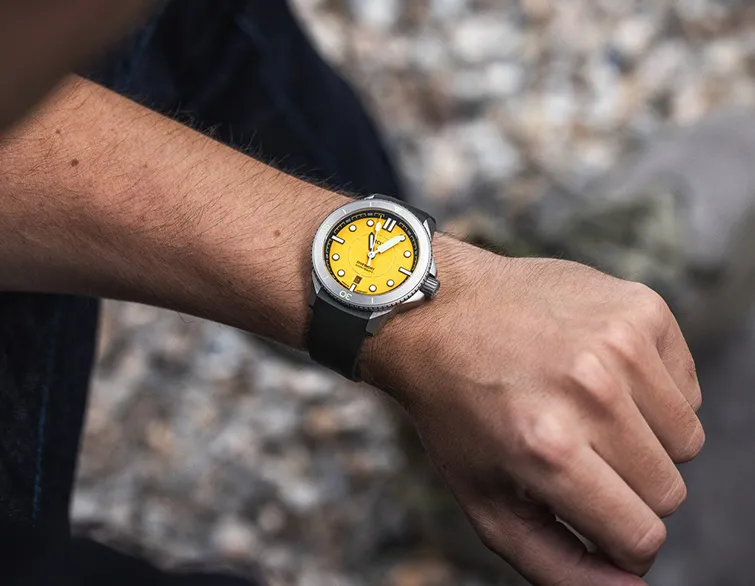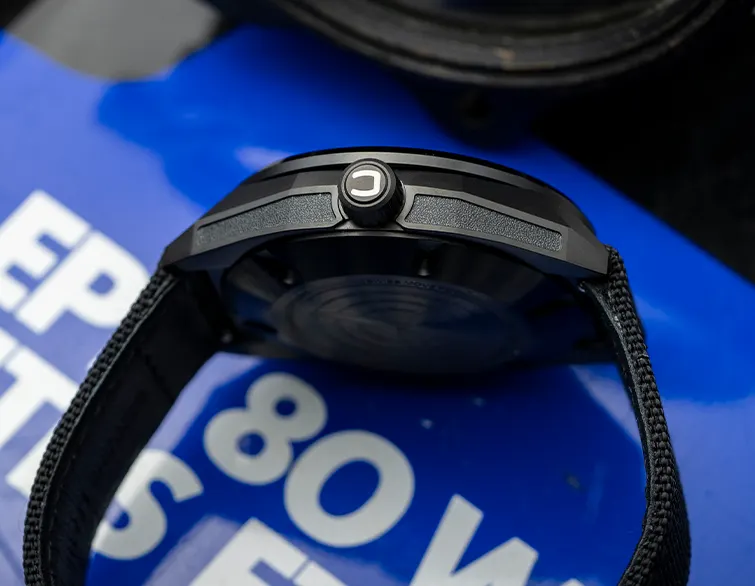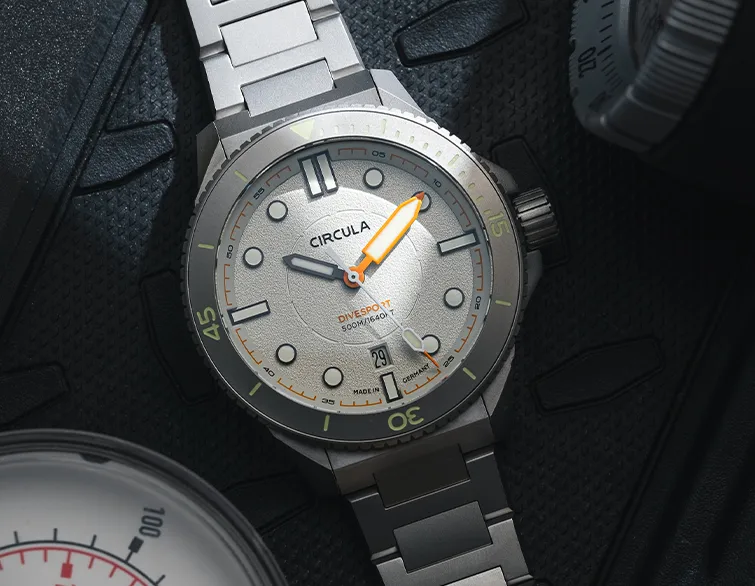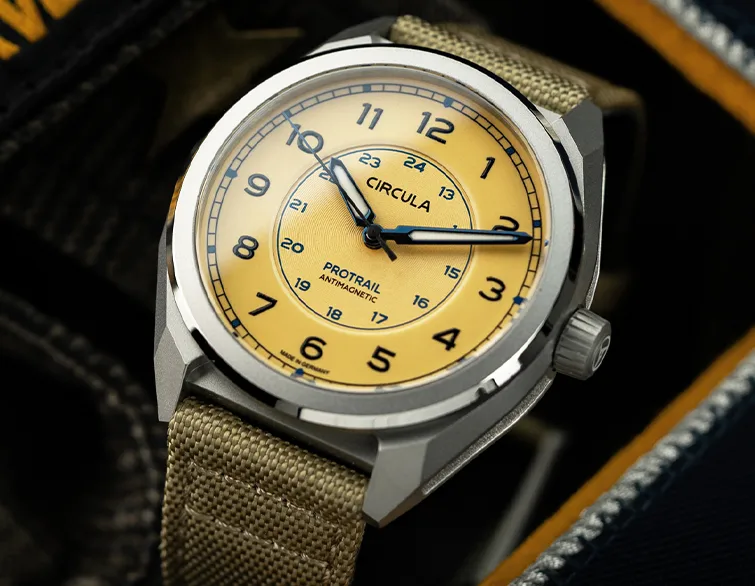25.04.2025
Why every Vickers counts.
The surface hardness of watches.
Surface hardness is a decisive criterion for the durability of watch cases. It determines how well a material is protected against scratches, impacts and wear and tear - an important factor for the longevity of high-quality timepieces.
Vickers hardness (HV)
Stainless steel and titanium are frequently used materials in the watch industry. They are not only corrosion-resistant, but can also be hardened considerably using special processes. But how do you actually measure the hardness of a material? This is where the Vickers hardness (HV) comes into play.

Vickers process (HV)
The Vickers method is a common method for determining the hardness of metals. A pyramid-shaped diamond is pressed into the material under a defined force. The size of the resulting indentation provides information about the hardness. Untreated titanium is around 150-250 HV, while titanium surfaces treated by plasma electrolysis or diffusion hardening can reach values of over 1,200 HV. The same applies to 316L stainless steel, which is often used in watches and has a hardness of approx. 200-400 HV when untreated, but also achieves a hardness of 1,200 HV through special surface treatment.

The value retention behind the process.
High-quality watches benefit from these technologies as they protect the case from scratches and maintain its value in the long term. If you are looking for a watch with a particularly resistant surface, you should consider the Vickers hardness as well as the material and finish.

Examples from the CiRCULA collection.
The ProTrail with hardened stainless steel case or the DiveSport Titan from CiRCULA not only impress with their sporty design, but also with an outstanding resistance of 1,200 Vickers.

